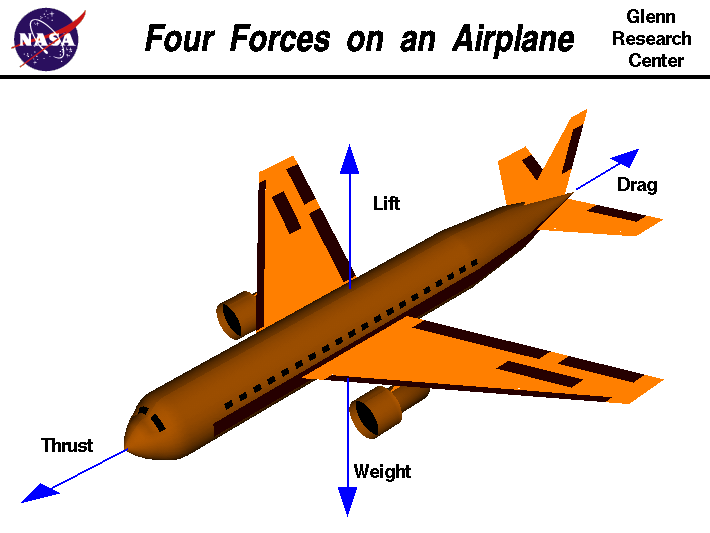There is a canonical diagram in every student pilot’s text book: a free-body diagram of the major forces acting on an airplane. I have a problem with it.
Here is one version of the diagram:

My problem is the similarity of the sizes of the arrows. They are all around the same length. This creates screwed up intuition about the magic of aerodynamics.
The reality is that, for most aircraft, the weight/lift (up/down) forces are an order of magnitude stronger than the thrust/drag (forward/backward) forces. Here are some numbers for a few aircraft along a wide spectrum:
| airplane | class | weight (lb) | thrust (lb) |
| Boeing 747-8 | commercial jet | 970000 | 66500 |
| Piper Aztec | light twin | 5000 | 500 (est.) |
| F-15E | fighter | 81000 | 58000 |
| Swift S-1 | glider | 1000 | 0 |
Notice that, except for very high-performance airplanes, the thrust is far weaker than gravity. This is the biggest miracle of aerodynamics. By using a wing to generate lift, the engine can be weak or even absent: it just needs to overcome mere drag. UPDATE: The effect is related to the much-greater-than-unity lift-to-drag ratio of most flying things.
Thusly informed, one’s intuition about flying ordinary airplanes forms differently. One no longer imagines that, for a landing going astray, if one just pulls the nose up a little higher, the engine will be able to contribute to a significant increase in lift. Instead, it is the wing lift that is paramount, which can be calculated as a function of airspeed and angle of attack. The engine plays only an indirect, gradual role.
By the time one becomes an experienced professional, good habits become second nature. But at the beginning, a misleading illustration can impede understanding.